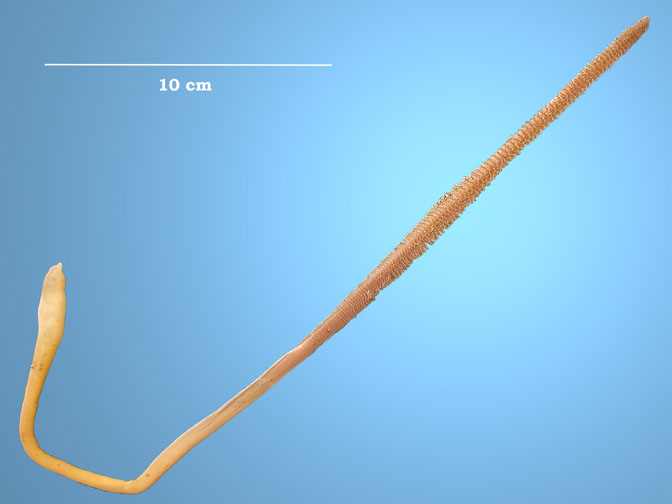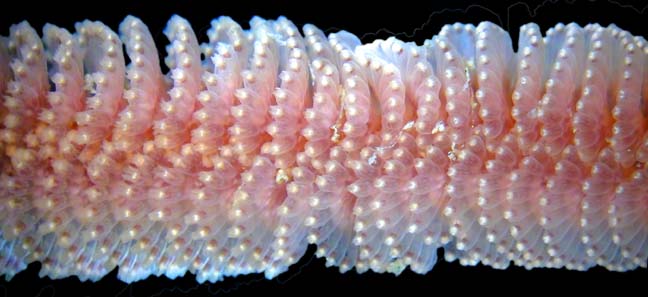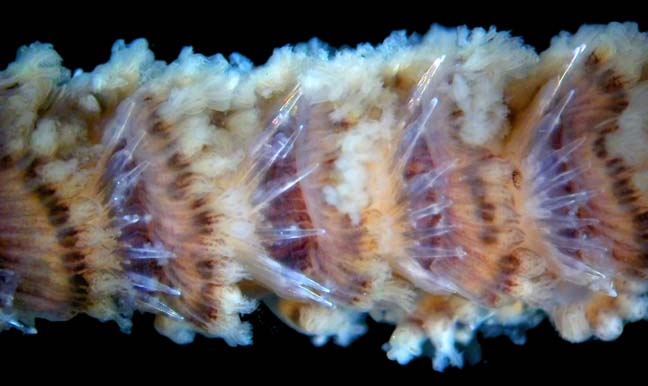Stylatula elongata Gabb, 1863
Sea pens are classified as octocorals. They are colonial coelenterates, composed of numerous small fleshy polyps. Feeding polyps, called autozooids, each possessing eight pinnately-branched tentacles, are arranged in leaves around the upper length of a single large primary polyp with a stem-like base which anchors the colony in the sandy or soft-bottomed habitats where they occur. Stylatula is common on intertidal and subtidal mudflats in bays and harbors of central and southern California. We frequently collect them throughout the central portion of San Francisco Bay; but it is unusual to bring one up intact, as the example shown, in a trawl net. Peristaltic action of the lower end of the primary polyp, called the peduncle, allows the colony to borrow into the mud to escape disturbances or emergence at low tides. The upper part of the colony, called the rachis, has a stiff central axis about which the feeding polyps are arranged. With the rachis extended into the water, the colony feeds on small suspended animals and detritus. Modified polyps called siphonozooids, clustered between leaf-like whorls of feeding polyps, circulate food-laden water through the colony. Stylatula is bioluminescent, especially when disturbed.

The peduncle shown here is curved around to fit in the frame. In its habitat it would burrow straight into the mud.

This detail view of the midsection of the rachis shows the arrangement of autozooids. Calcareous spicules (see image below) are present, but lie hidden beneath the well-developed polyp leaves.

This detail view from near the distal tip of a rachis from a different specimen (which may or may not be the same species) shows rows of autozooids alternating with calcareous spicules.
